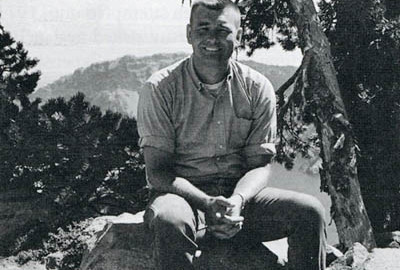The regional office in Seattle brought a guy named James Quinlan from the Kentucky caves, I don’t know what that park is called (25). He was an outstanding geologist with a specialty in ground water studies. He came to one of our meetings, and then spent some time at Crater reviewing the studies. He recommended to the Park Service that they introduce an organic tracer that you could detect. It doesn’t create a color in the water, since it’s invisible, yet it could be detected as an organic compound. He said we should do that just to see if there is leakage from the septic system. I agreed, and said if there is leakage then we need to know what affect it might be having on the lake. I also suggested that we’re seeing a change in optical properties, but we didn’t have sufficient historical data to determine if the measurements I made in ’78, ’79, ’80, and ’81 were indicative of natural conditions. Are they cyclic conditions or are they indicative of a change caused by some anthropogenic source like sewage? If we had a strong historical data base we could compare these recent Secchi readings and other optical measurements with the historical data base to chart any trends. Is this an unprecedented change, or could it [the decreased Secchi readings] have occurred earlier? In any case, we lacked this historical database so we weren’t able to tell if these recent data are unusual or if they are typical of a cycle. We were hampered in making any evaluation.
I felt there were two levels of approach here. The first level was to introduce tracers and see if indeed septic wastes were reaching the lake. The next level was if we find that sewage is entering the lake, then we need to know what effect this is having on the lake’s biota. One way to do that is bioassays. I made some proposals how we could approach them. We could do both in situ and laboratory bioassays. The first is where we would take algae from the lake and incubate them directly in situ. The second involves taking them to a laboratory and do the so-called PAAP test, that is the Provisional Algal Assay Procedure that EPA uses. None of this was done. The Park Service refused to carry out Quinlan’s recommendation to use a tracer and they didn’t want anything to do with my recommendation for bioassays to see if the algae were growing in response to this septic leakage.


